BEST CARNICERÍA (MEAT MARKET)
Carnicería El Camino
We know we've come home to Mexico when we catch that first whiff of smoky barbacoa wafting on the breeze. Whether it's from chicken, beef, pork, lamb or baby goat being grilled over an open mesquite fire or slow-roasted on hot coals in an open pit, that heavenly smell is, for us, an unmatchable part of the best of Mexican culture and cuisine. Carnicería El Camino keeps those fragrant home fires burning bright for homesick Phoenician Mexicophiles with its extensive selection of Mexican-style cuts of meat, poultry and seafood. A small, corner grocery store with a down-home, old-fashioned feel, El Camino is piled to the rafters with all ingredients Mexican, but it's the butcher counter that shines like the blazing sun over the ancient pyramids of Teotihuacán. Here you'll have no trouble finding real Mexican chorizo, diesmillo (thinly sliced chuck roast), cecina (paper-thin pieces of dried or partially dried and seasoned beef or pork), chuleta (huge, thin slices of pork or lamb both unsmoked and smoked) or carne de chivo and borrego (goat and sheep, respectively) for barbecuing. The store also has 100 percent Mexican brand Chimex salchichón (a spicy, salami-like sausage), beef tongue, premade fajita mix for the less ambitious of us cooks, and codornices (quail). If you're a seafood lover, El Camino has that covered, too, offering large uncooked shrimp, pulpo (octopus), and, on the weekends, fresh ceviche. Also available for those weekend hangovers is classico rico menudo, a sloshy, tongue-searing tribute to beef tripe, hominy and calf's knuckles that's a guaranteed cure for those who have over-partied on the fin de semana.
BEST MEXICAN GROCERY SHOPPING FOR GRINGOS
Phoenix Ranch Market
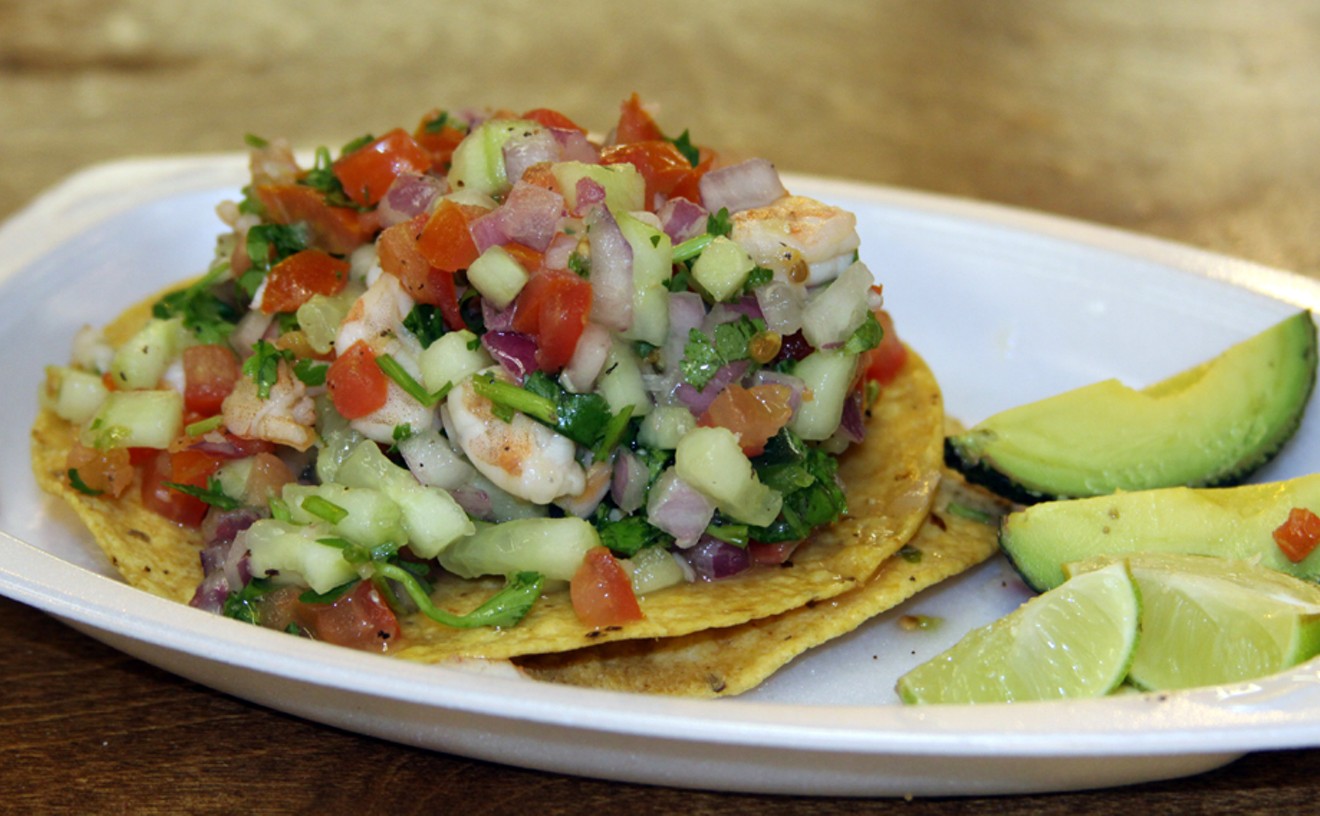
Timur Guseynov
We are seriously jealous, not to mention thoroughly bummed. Now that we've been to Phoenix Ranch Market at 59th Avenue and Thomas Road (visualize AJ's duded up for a Mexican quinceañera fiesta), we are finding it increasingly difficult to shop at our local Safeway. Our neighborhood grocery doesn't sport larger-than-life-size metal mariachis and a tin donkey on its roof, gaily welcoming all who enter its cleverly designed Mexican-style portals with blaring mariachi and norteño music pumped into its state-of-the-art sound system. Nor does our corner store boast signs in Spanish trumpeting fabulous palapa-embellished meat, fish, bakery, tortilla, cheese and fresh deli sections geared to classic regional Mexican cooking. Does your corner grocery store offer baby goat and patas de pollo (chicken feet), as well as mini-corn dogs? We didn't think so. Since discovering Phoenix Ranch Market, we're unable to cruise the aisles of our humdrum, peanut-butter-and-jelly neighborhood food emporium without a pang of longing. We're virtually haunted by the memory of Phoenix Ranch Market's huge tortilla-making machine, operated by crisply dressed, hair-netted ladies and spewing out plate loads of aromatic, Frisbee-shaped wheat and corn pancakes. And by PRM's glass barrel jars of homemade aguas frescas in tangy tropical flavors of pineapple, tamarind, Mexican lime, watermelon, cantaloupe and cinnamony rice-flavored horchata. To be honest, it's become increasingly hard to live without instant access to fresh nopales (cactus pads), membrillo (guava paste), cooked octopus, piñatas, and our favorite Mexican fabric softener (Suavitel in "primavera" scent), all of which Phoenix Ranch Market stocks on a regular basis. The only thing that's saving us from moving across town is the knowledge that a new Phoenix Ranch Market has opened at 1602 East Roosevelt Street, close enough to become our new favorite food-shopping destination.
- 1602 E. Roosevelt St., Phoenix, 85006 Map
- 602-253-6874
- www.losaltosranchmarket.com/
BEST PLACE TO FIND AUTHENTIC MEXICAN COOKING SUPPLIES
La Tolteca
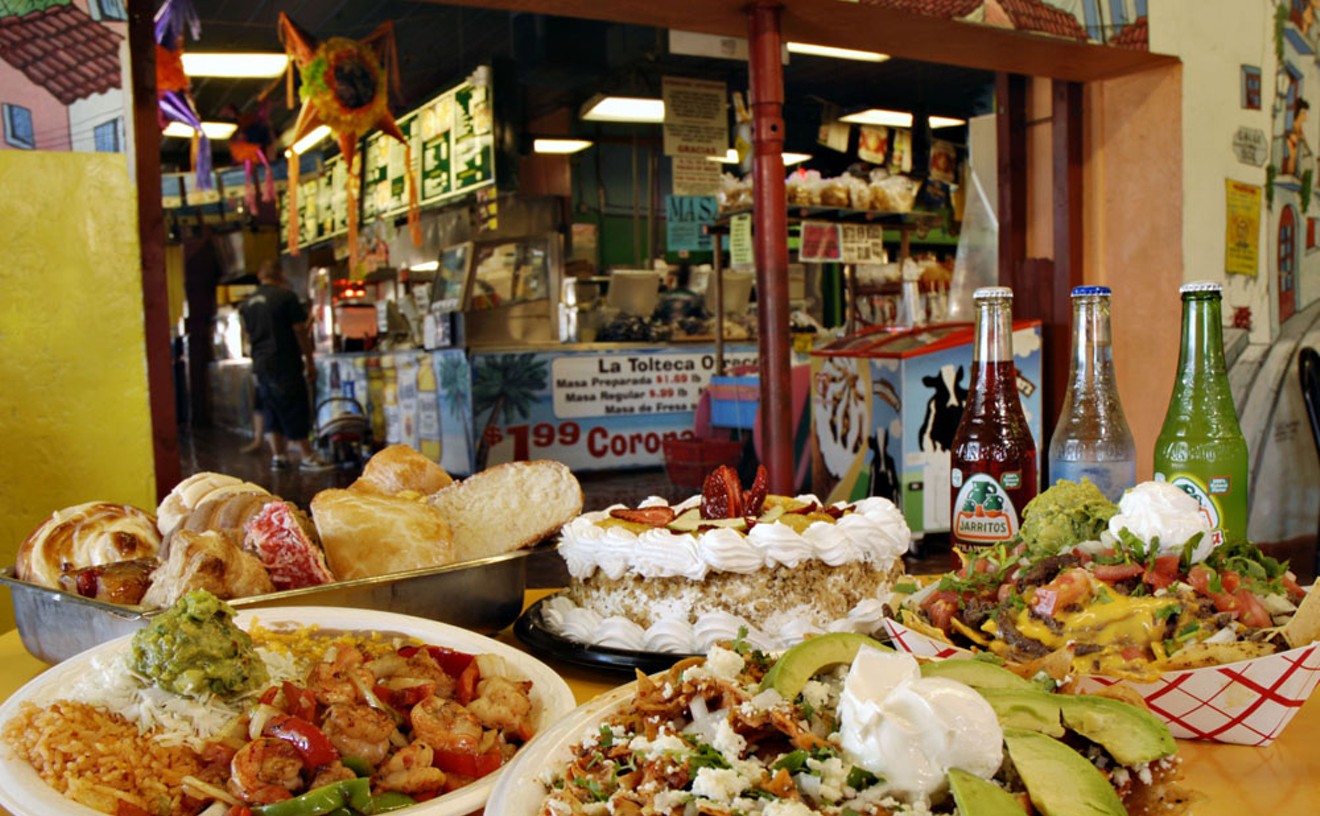
Jackie Mercandetti
We thought we'd died and gone to Libertad Mercado in Guadalajara when we discovered the Mexican cookware, utensils and supplies stocked at La Tolteca, a combo bakery, deli, restaurant and meat counter on East Van Buren done up in bright, serape-esque colors. If you can tear yourself away from La Tolteca's long glass bakery cases filled with fragrant pan dulce, freshly deep-fried churros and whipped-cream-topped tres leches cake and are not deflected by its fabulous meat counter and eat-in dining area, you'll find yourself in the middle of neatly arranged, good-quality Mexican cookware and utensils hard to find outside of Mexico itself. We saw huge metal cazuelas, big tubs with handles used for deep frying and simmering; humongous tamale steamers; comales, flat metal griddle-like affairs for cooking tortillas, searing fajitas or scorching fresh chiles; and those wonderful, inexpensive hand citrus squeezers that Williams-Sonoma powder-coats and sells for a small fortune. We also scoped out tortilla presses, hand-crank corn grinders for making masa, straw scrub brushes, wooden spoons and stirrers, and molinillos, a sort of wooden whisk-like utensil you twirl between your palms to froth Mexican hot chocolate to foamy perfection. La Tolteca also stocks authentic volcanic stone molcajetes and tejolotes, three-legged mortars and pestles used by every good Mexican cook worth her sal to grind up everything from chiles and spices to tomatoes and onions for salsa and guacamole. And speaking of chiles and spices, you'll find an extensive selection of both fresh and dried ones at La Tolteca right across the aisle from the cookware.
- 1205 E. Van Buren, Phoenix, 85006 Map
- 602-253-1511
- www.latoltecamex.com
BEST PLACE TO BE ON THE FEAST OF OUR LADY OF GUADALUPE
Our Lady of Guadalupe Chapel

There's no contest: Our Lady of Guadalupe is the reigning Queen of Mexico and has been for more than 470 years. Since 1531, when the brown-skinned Virgin first appeared to Saint Juan Diego, a humble man of Chichimeca descent (he made the saints' list in 2002), on the hill of Tepeyac in Mexico City and miraculously imprinted her image on his tilma (a cactus-fiber cloak), la Guadalupana has reigned supreme as the Patroness of Mexico and continues to rule the hearts and minds of Mexican Catholics. December 12 is her feast day, and Catholics throughout Mexico and the American Southwest celebrate her with processions, Masses, singing and rosaries. Beginning the evening of December 11, Our Lady of Guadalupe Chapel, a satellite of Our Lady of Perpetual Help Church in Glendale, hosts a rosary and a blocks-long procession in her honor, as well as a theatrical drama re-creating the apparition of the Virgin to Juan Diego. Along the way, special homes with Guadalupe shrines are opened, and blessings are given, after which there is all-night adoration by the faithful. At daybreak on the 12th, special mañanitas, songs dedicated to the praise of Guadalupe, are sung, and Mass is said. There's no better way to get a real taste of Mexico than to be a part of this enduring and most Mexican of Mexican traditions.
- 6733 N. 55th Ave., Glendale, 85301 Map
- 623-939-9785
BEST PLACE TO FIND A STATUE OF SANTISIMA MUERTE
Yerbería San Francisco
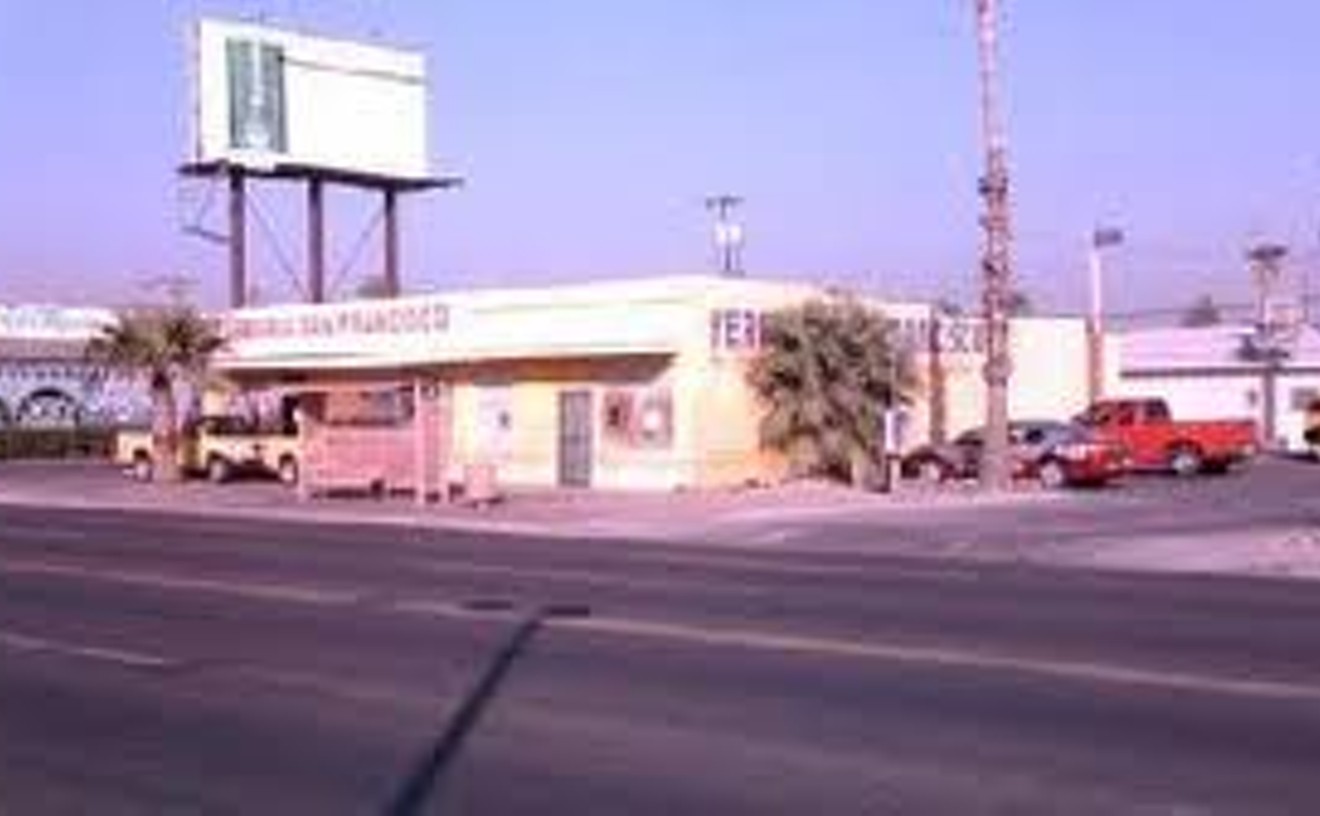
Ever see those statues of what appear to be the Grim Reaper in drag at the swap meet? That, mis amigos, is La Santisima Muerte -- Most Holy Death. She's the subject of a fast-growing cult in Mexico that considers her a powerful saint, though the Catholic Church has banned her from its approved saints list (which now excludes the saint of surfer dudes everywhere, Saint Christopher). Actually, cultural experts consider La Santisima Muerte the Catholic folk disguise for Mictlancihuatl, the ancient Aztec death goddess and co-regent of the dark underworld. Mictlancihuatl happens to be the sister of the Aztec goddess Tonantzin, whose Catholic incarnation is the Virgin of Guadalupe. You could say Santisima Muerte is the dark flip side of Guadalupe, a sort of Virgin Mary represented as a skeleton. And though she's extremely popular with the less savory elements of society, she's acquiring street cred among respectable folks who invoke her powers for love spells. Yerbería San Francisco has a Santisima Muerte selection to die for, so to speak. From small statuettes to three-foot-high sculptures, this is a must stop if you're looking for love in all the right places but it's just not happening, or you've got a wandering boo who's making you boo-hoo.
- 2718 W. Van Buren St., Phoenix, 85009 Map
- 602-233-2163
- yerberiasanfrancisco.lbu.com
BEST PLACE TO FIND A STATUE OF JESUS MALVERDE
Yerbería Fuente de Salud
We first stumbled upon the mysterious Jesus Malverde years ago during a trip through Magdalena, Sonora. We couldn't figure out the story behind the statues and busts of a dashing Errol Flynn look-alike that we just had to buy at a large religious store there, and the counter girl waiting on us wasn't very forthcoming about his history or the reason his prayer card depicted him with a noose around his neck. Later, we discovered the Holy Swashbuckler was none other than Jesus Malverde, El Bandido Generoso, who stole from the rich and gave to the poor. He's a not-so-underground folk saint particularly popular in Sinaloa, whence he allegedly came, and was summarily dispatched by hanging (there are several different versions of how he died) in the 1920s. Whether Malverde ever actually existed is really unimportant to his huge, adoring fan base, which conspicuously includes narcotraficantes, a.k.a. international drug smugglers. Since discovering his true identity, we've been voraciously collecting Jesus Malverde effigies in all their glory. Yerbería Fuente de Salud carries a number of Malverde busts, but we truly cherish our new addition to the collection: a leather-backed, embroidered necklace with Malverde's face on it that we got there recently for a mere $4.95.
- 3015 E. Thomas Road, Ste., Phoenix, 85018 Map
- 602-956-6263
BEST MEXICAN BOTANICA
Yerbería La Esperanza
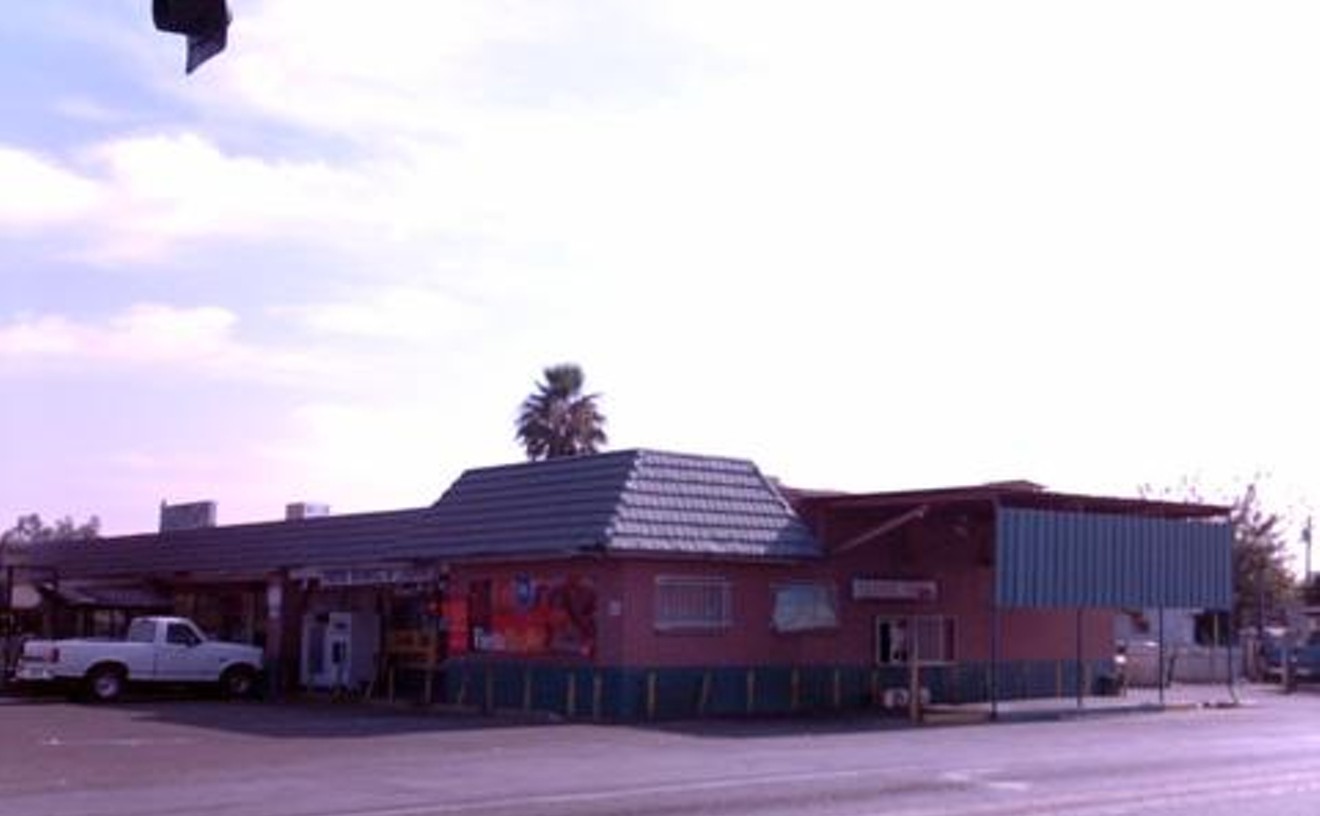
For some reason, here in Phoenix, botanicas are uniformly called yerberías. But a rosa by any other name is still a rosa, and, whatever you want to call them, they're one and the same: specialty stores that sell a bewildering variety of medicinal herbs and religious supplies used for both natural remedies and curanderismo, a lively blend of folk cures, white magic and pidgin Catholicism. Spiritualism, occultism, medieval Spanish Catholic traditions and folk healing all meet and greet one another in your typical yerbería, a convenient stop where you can buy herbs and tree bark to lower your blood pressure, buy a Buddha for good luck, snag a Virgin of Guadalupe for your home altar, or acquire candles and powders to cast a spell. And at Yerbería La Esperanza, we always find crucifixes, good-luck amulets, statues of saints that we know for a fact are used in Afro-Cuban santería practices (which are becoming very mainstream in Mexico), and an entire wall of neatly packaged natural remedies that can also double as offerings in a number of rituals. This shopping spot even has several very cool statues of San Simon of Guatemala, another one of those folk deities deemed naughty by the Catholic Church, but who still has a devoted following throughout Latin America.
- 3037 W. Van Buren St., Phoenix, 85009 Map
- 602-272-8112
BEST PLACE TO FEEL LIKE YOU'RE IN A MERCADO IN MEXICO
Dos Hermanos Centro Comercial
Just like in Mexico, this large indoor mercado, lined with small, individual businesses, is a one-stop-shopping destination that houses just about everything you could possibly want or need to make your life complete. Visit Friendly Records for Mexican music CDs in every genre, or bargain for over-the-top laminated and ormolu-encrusted 19th-century French repro furniture -- the apex of Mexican middle-class fashion -- at Let's Make a Deal Furniture. And while you're at it, arrange your next blowout, be it birthday, wedding reception or quinceañera, at the Salon de Fiestas, a part of Dos Hermanos Centro Comercial. Joyería Diaz is ablaze with gold jewelry, and there are several shops, including Novias Gladys, that specialize in wedding paraphernalia like silk flower bouquets, tuxedos and formal wedding attire -- and, for après fiesta, soccer equipment. If you're feeling particularly mainstream holy, cruise by Librería Dios de Amor, a Spanish-language Christian music store, or check out Yerbería Guadalupana, a traditional botanica chock-full of naturopathic remedies, herbs and potions that can also be used for arcane religious rites designed to bring back the wayward groom or beau. And to elevate your plunging blood sugar level after the glucose-depleting intensity of all this shopping, stop by the Mexican candy stand on your way out.
BEST PLACE TO GET HOT WHEEL RIMS AND SEE ART AT THE SAME TIME
4U Used Cars and Tires
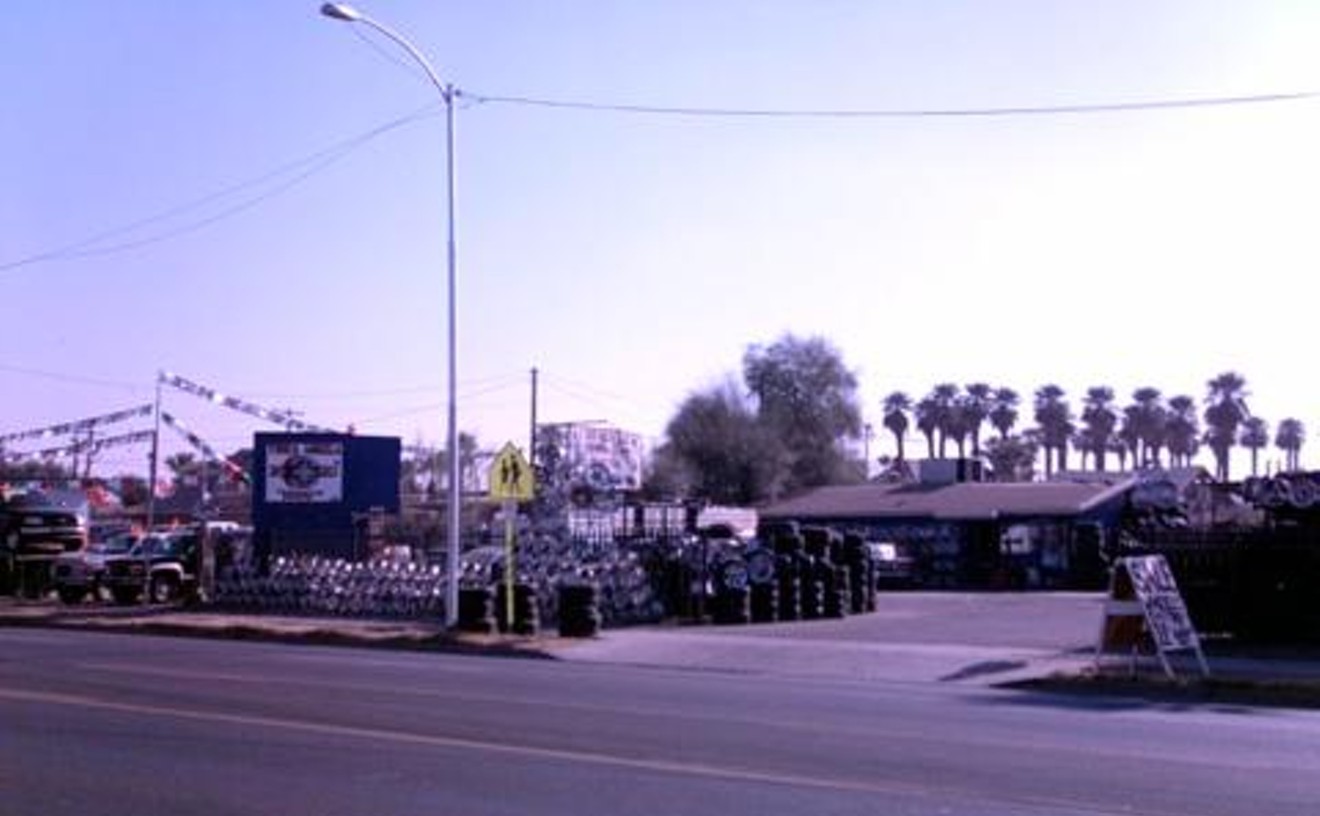
We hung the fastest U-turn we could when we spotted the artfully arranged chrome wheel rims standing guard at the entrance to 4U Used Cars and Tires on Van Buren Street. Even though we're usually not into this sort of thing, and admittedly know next to nothing about wheel rims (or cars, for that matter), we were inexplicably seduced by the eye-blasting gleam of 4U's chrome lowrider rims, fashioned into a seamless wall of sparkling pattern; by the come-hither look of the rims' sexy cross-and-radial-spoke patterns; and by the silvery sophistication of the elegant spinners on display. Omigod, the spinners! Ever since we saw 4U's sculptural shrine to car culture, we've been considering putting them on our 1992 Volvo sedan. Seriously.
- 2117 W. Van Buren St., Phoenix, 85031 Map
- 602-271-4557
BEST PIÑATA STORE
La Piñata Nueva
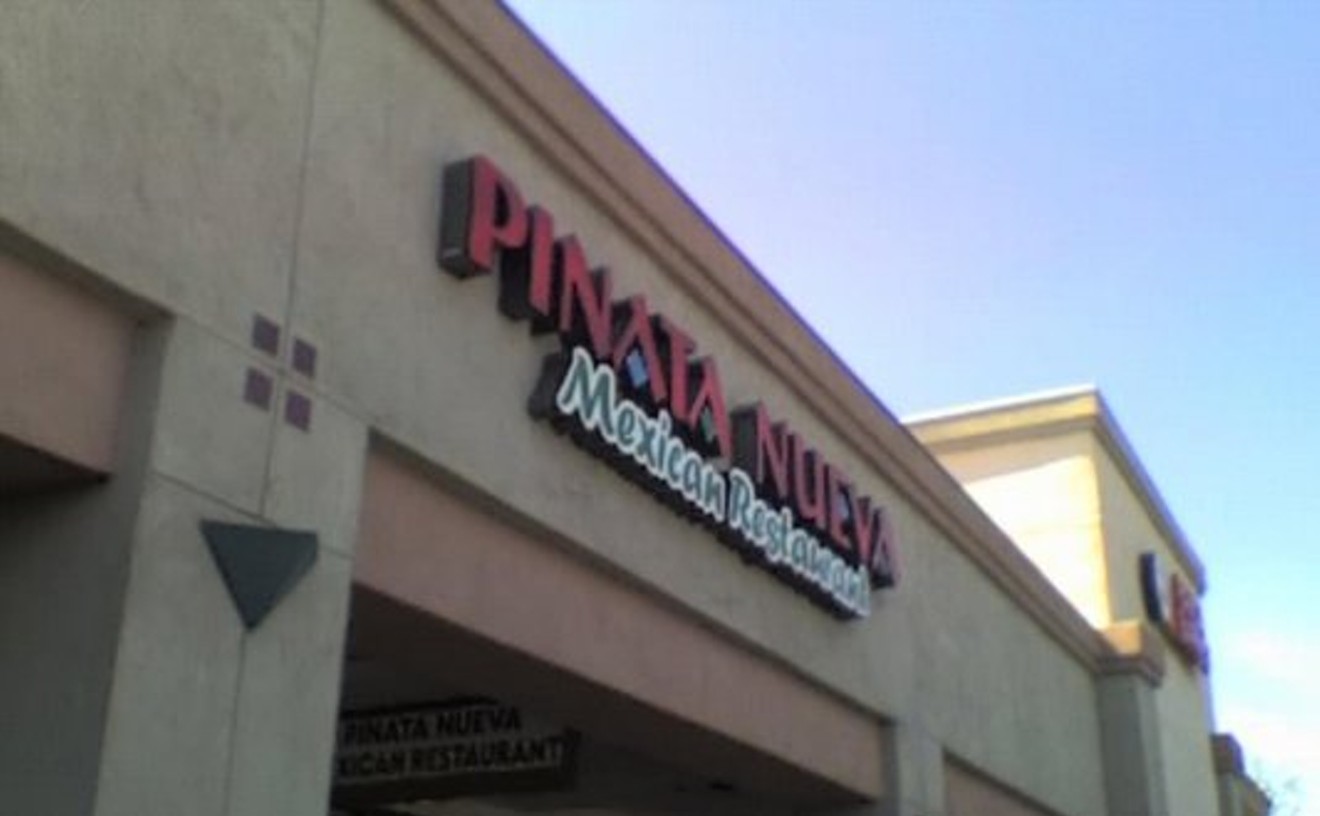
They don't sell anything else but piñatas at La Piñata Nueva. A hundred or so tissue-paper creations of all shapes and sizes hang from the ceiling of the warehouse at 27th Avenue and Thomas Road: Traditional Mexican star-shaped piñatas share space with Scooby-Doos, Winnie the Poohs, Spidermen, and Shreks. The piñatas are made here, on site, by women who watch telenovelas as they layer sheets of colored crepe paper over cardboard forms. The folks at La Piñata Nueva can make a custom piñata to almost any size and shape you want; just bring them a picture of what you're after, and they'll craft it for you. They also sell bags of candy and trinkets to put into the piñatas, and crepe-paper-covered sticks for busting them open. The prices are reasonable -- a four-foot-tall Dora the Explorer piñata, for example, runs only $20. ¡Andale!
- 2740 W. Thomas Rd., Phoenix, 85031 Map
- 602-455-9256





